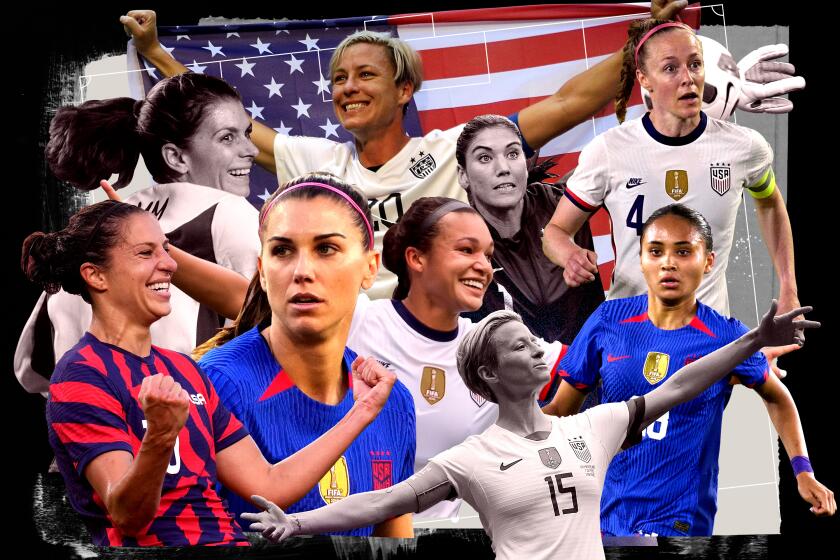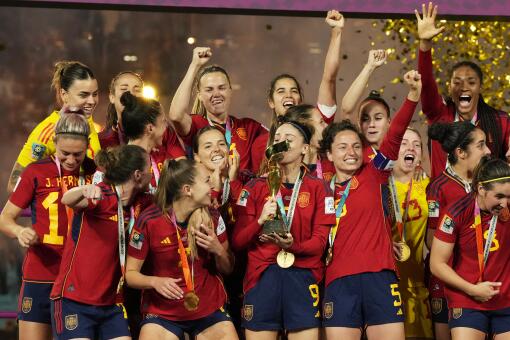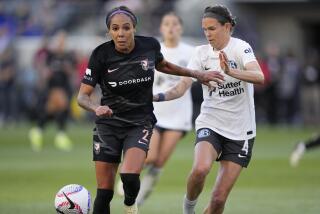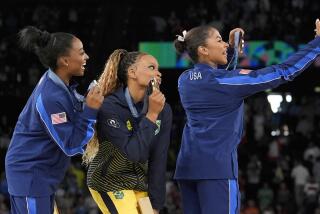Women’s World Cup payouts still lag far behind men despite promising progress
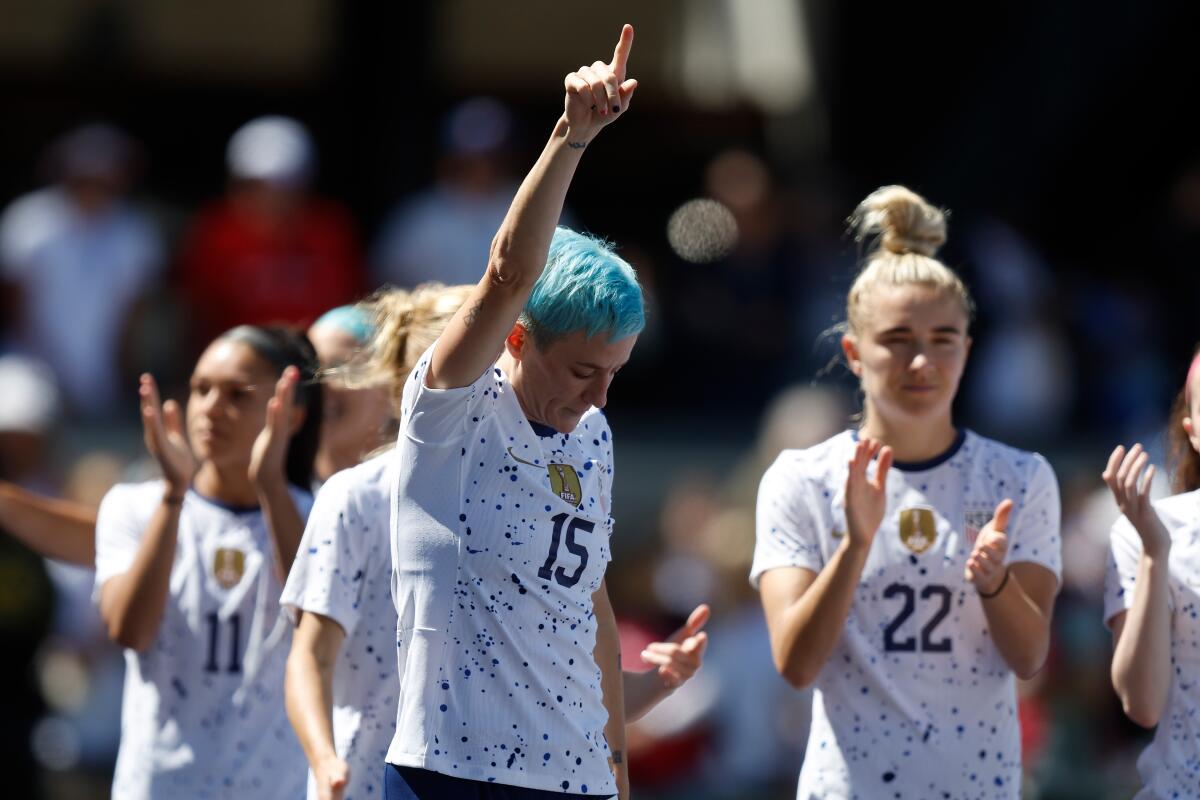
- Share via
AUCKLAND, New Zealand — When Germany won the Women’s World Cup in 2003, the team took home a trophy and nothing else. That’s because FIFA did not offer prize money during the first four tournaments, so Germany, like every other team, played for glory and little else.
But at this summer’s tournament, the ninth Women’s World Cup, the winning team will get $10.5 million from a total purse of $152 million. Progress, right?
Well, yes ... and no. Because while that record payout is more than the field shared 20 years ago, it’s $4.5 million less than what FIFA, global soccer’s governing body, paid out in the men’s World Cup 21 years ago. Meanwhile, the men’s purse has grown to $440 million.
So what the women want now isn’t progress, it’s parity.
Ahead of the 2023 Women’s World Cup in Australia and New Zealand, we review the USWNT’s all-time greats and its up-and-coming stars.
“Equality is actually good for business,” said U.S. star Megan Rapinoe, an outspoken advocate in the team’s bruising, six-year fight for equal pay, a battle whose successful outcome inspired rival national teams. “It’s the biggest women’s sporting event in the world. This is a real opportunity. It feels like this is a paradigm shift or a moment we’ll look back to and say ‘Nothing was ever the same after this Women’s World Cup.’
“Everybody is thankfully pushing in the right direction and pushing in the same direction and the sky’s the limit.”
Last year, the U.S. Soccer federation negotiated separate collective-bargaining agreements with its men’s and women’s teams calling for equality in travel, training and pay, including a 50-50 split in prize-money earnings. Now other Women’s World Cup teams want FIFA to do the same.
Three days before this tournament kicked off, the 23 members of Australia’s team, one of the World Cup hosts, released a video criticizing the wage gap, with midfielder Tameka Yallop saying “FIFA will still only offer women one-quarter as much prize money as men for the same achievement.”
FIFA president Gianni Infantino has promised to change that by the next World Cup cycle.
“Our ambition is to have equality in payments for the 2026 men’s and 2027 Women’s World Cup,” he told delegates to the FIFA Congress last March. “FIFA is stepping up with actions, not just with words.”
Addressing the media in New Zealand on Wednesday, he sidestepped questions about how that project is coming along.
“For me it’s a moment to focus on the positive, focus on the happiness, focus on the joy,” he said. “If somebody’s still not happy about something, well, I’m so sorry.”
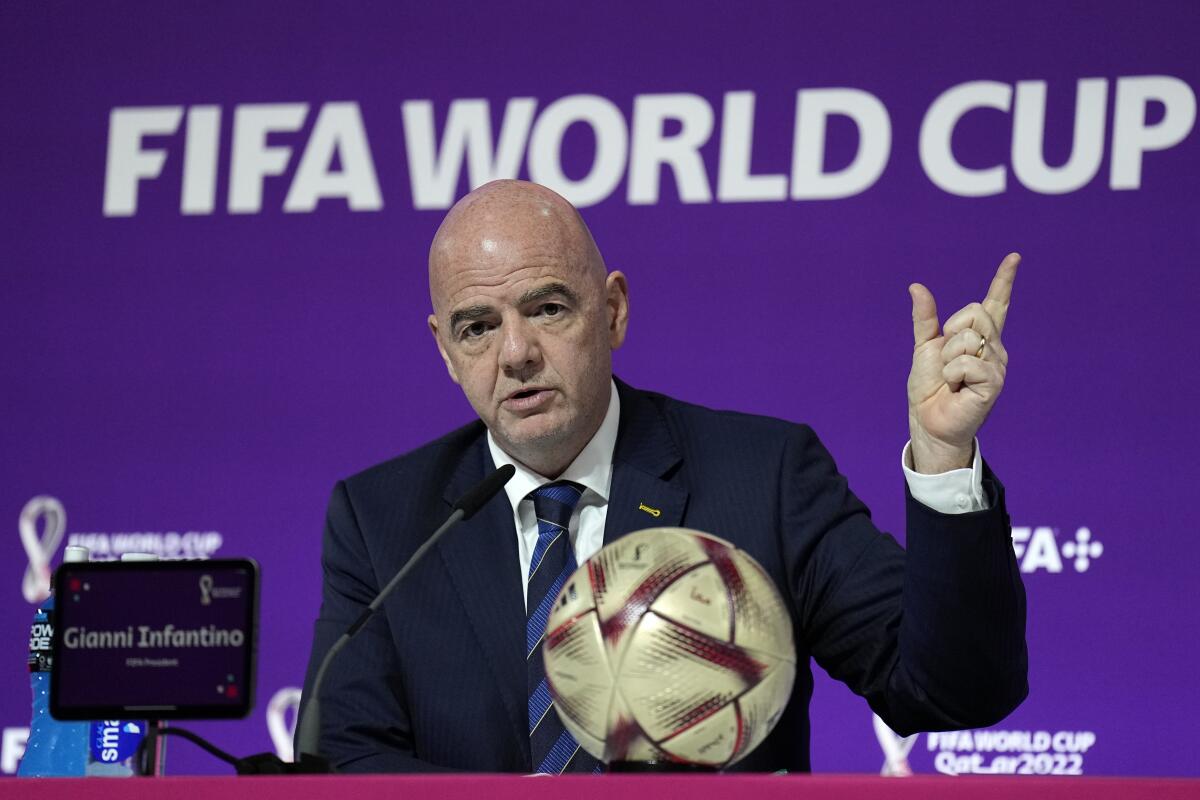
Infantino had to deflect the topic because his plan to fund the prize-money increase through more lucrative broadcast revenues hit a snag. Through the first eight Women’s World Cups, TV rights to the tournament were bundled with the men’s, so when a broadcaster paid for the men, it got the women for free.
In this cycle, FIFA’s aim was to raise $300 million by selling the global TV rights to the women’s tournament separately, only to come up about $100 million short, according to the Wall Street Journal. So what was expected to be a big step forward wound up being a stumble, with broadcast revenues for the women’s tournament generating about 15% of what the men got for the 2022 World Cup, which reportedly earned FIFA more than $3 billion.
“Up to this point, the full commercial value of the women’s game has not been fully understood and the full potential of the women’s game has not been unlocked,” Sarai Bareman, FIFA’s chief women’s football officer, wrote in an email. “Accelerating the growth of women’s football is a top priority. The increasing revenue is a natural step.”
FIFA has had some success. This summer’s World Cup will be the largest in history, with 32 teams and 64 games, and it will be the first shared by two countries, with New Zealand playing host to 29 matches and Australia staging 35. Organizers say overall ticket sales, which have been lagging in New Zealand, are expected to top 1.5 million while TV viewership could reach 2 billion worldwide. Both figures also would be records.
As a result, Infantino expects this World Cup to generate about $500 million in revenue, making the event self-sustaining for the first time.
Jill Ellis, who coached the U.S. to victories in the last two World Cups and now is the head of FIFA’s technical study group, believes Infantino is sincere in his push for pay equity.
“I’ve heard him say the future of football is female. That commitment to equalize it, I think, for the next World Cup is something that’s very forefront,” she said. “There’s a recognition of just how much the women’s game has grown and how much potential still remains in it.”
New Zealand captain Ali Riley said FIFA already has made some things equal. For example, all the teams will have base camps and dedicated training facilities rather than having to pick up and move after every game. Hotels, travel and other services for the women must be at a level comparable to those delivered to men’s World Cup teams last year and each player, for the first time, will get a private room.
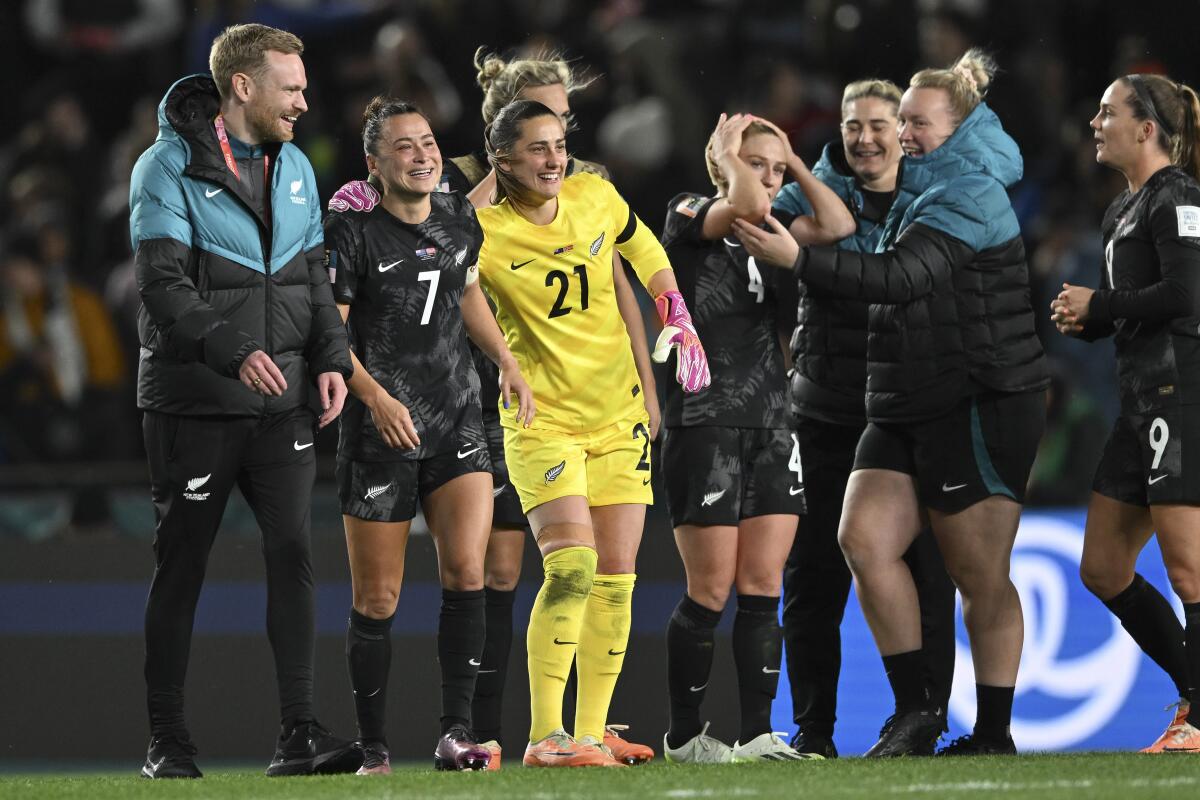
“Looking at the equal conditions, having single rooms, that’s not something that we could ever imagine,” said Riley, one of more than 150 women who last fall signed on to a letter from the players international union to Infantino demanding better treatment and equal pay. “Your roommate might have a cold, might have diarrhea. You’re in a tiny, itty-bitty room with no room to even open your suitcase.
“That’s what it’s been like not having equal conditions. These are all things that make a huge impact.”
So will one other perk: This year every World Cup player, whether they step foot on the pitch or not, is entitled to $30,000, more than double the average annual club salary for a woman’s soccer player in 2022. Whether the women get that money is far from certain, however, since FIFA said the payments will be made to each team’s national federation, which will be responsible for passing the money on.
That hasn’t always worked out well. Just last month members of the South Africa team charged their federation with withholding World Cup bonus payments, while the Jamaica team had to raise money for its tournament preparations amid accusations its federation was not providing agreed-upon compensation.
“For women professional players, that actually can be quite life changing, $30,000. A men’s player would probably not have the same feeling about that,” said Riley, who is playing in her fifth World Cup. “So this is a very, very important step forward. Now it’s like, ‘OK, we got here. But we’re not just going to just sit back.’ You’ve said this is a condition, but with the promise of equalization of prize money by 2027.
“So we’re going to make sure that that happens.”

